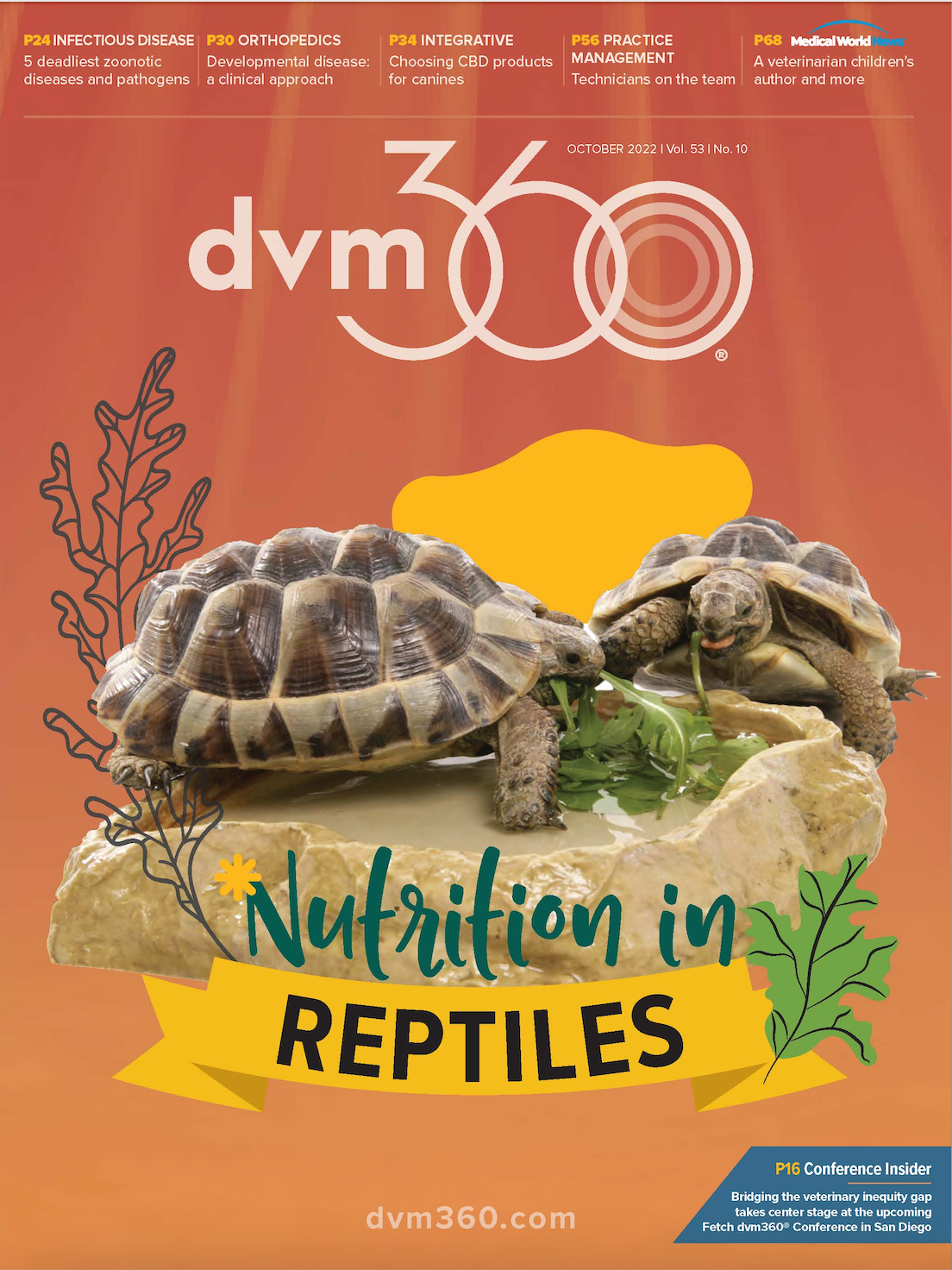Causes and management of canine atopic dermatitis
Preventing and treating pruritus and skin lesions requires a personalized patient plan
This article was updated September 30, 2022.
Managing atopic dermatitis (AD) in dogs starts with finding the allergen that causes the flare-up and ends with administering the best treatment. Darren Berger, DVM, DACVD, an associate professor at Iowa State University College of Veterinary Medicine, addressed the correlation between allergens and AD and management of the condition at the 2022 Fetch dvm360® Conference in Kansas City, Missouri.
“Allergy management is allergy control,” he said, and if clients think they’re “never going to [see a] flare, that’s an inappropriate expectation.” The “realistic goals” are to decrease AD severity, space out flares, and make long-term treatment less expensive.1
Allergens
An inflammatory condition, AD is the second most common allergic skin disease in dogs, behind flea allergy dermatitis,2 and can be caused by food, parasitic, and environmental allergens.1,2
Parasites
“It’s fleas and it’s microscopic mites,” Berger said, but flea preventives can deter onset of signs and symptoms associated with parasitic allergies.
Food
“We have to stop talking about expensive diets…[and] fancy foods [and]…start talking about diagnostic testing,” Berger added, pointing to the benefits of an elimination diet as a diagnostic tool to ascertain which food, if any, is causing a dog to itch or show other signs of allergic dermatitis.
Environment
Pollen and dust mites are among the environmental allergens that may cause a skin reaction in dogs.
Treatments
Because atopic dermatitis is multifaceted, treatments should be tailored to the individual patient and combined interventions should be used to improve outcomes. Condition stage and severity plus lesion distribution should be considered when creating a treatment plan.3 Once the cause of a flare has been established, the following treatments may be explored.1
Diet
One way to prevent or manage flares is by eliminating a known allergen from a dog’s diet. Increasing the fatty acids in the diet can help prevent flares, Berger said, although the practice is not as useful for managing signs and symptoms.
Bathing
Bathing with a nonirritating shampoo can relieve mild signs and symptoms.3 The International Committee on Allergic Diseases of Animals (ICADA) recommends formulations containing complex sugars and antiseptics (Allermyl; Virbac), phytosphingosine, raspberry oil, or lipids (Douxo Calm; Ceva).3 “It needs to be soothing,” Berger said, noting that clients who don’t see relief in pets after bathing are often using warm water and do see a change after switching to cool water.
Medications
According to ICADA, topical and oral glucocorticoids, oral cyclosporin, oral oclacitinib, and injectable recombinant interferons effectively reduce pruritis and skin lesions, while topical glucocorticoids and immunotherapy that targets specific allergens can prevent or delay AD recurrence.3 Antihistamines are also an option when environmental allergens are the trigger: they “do not stop itch; they may prevent it,” Berger said.
Takeaway
Communication is essential. “I don’t tell clients what to do. I involve them in the decision-making process,” Berger said, to help them understand why they’re doing what they’re doing and ensure treatment adherence and better long-term outcomes.
Client input is also important because not all dogs respond to treatments in the same way. If the condition appears to be seasonal, for instance, food allergens can be eliminated. Likewise, cost must be discussed: if treatments are unaffordable, dogs will go without. “It’s our job to educate [clients], to give them options,” Berger concluded.
References
- Berger D. Canine atopic dermatitis: how a dermatologist discusses atopy with pet parents. Presented at: Fetch dvm360® Conference, August 26-29, 2022; Kansas City, MO.
- Atopic dermatitis in dogs: causes, symptoms, and treatments. PetMD. February 13, 2020. Accessed September 21, 2022. https://www.petmd.com/dog/conditions/skin/c_dg_atopic_dermatitis
- Olivry T, DeBoer DJ, Favrot C, et al. Treatment of canine atopic dermatitis: 2015 update guidelines from the International Committee on Allergic Diseases of Animals (ICADA). BMC Vet Res. Published online August 16, 2015. doi:10.1186/s12917-015-0514-6
